Moglix streamlined procurement for airport infrastructure operator through a VMI facility in UAE, to enhance efficiency and material availability.

Moglix streamlined procurement for airport infrastructure operator through a VMI facility in UAE, to enhance efficiency and material availability.
Moglix streamlined procurement for airport infrastructure operator through a VMI facility in UAE,قراءة المزيد
Moglix enabled the UAE’s largest steel producer to save AED 5 million while drastically reducing PR-to-PO turnaround time.

Moglix enabled the UAE’s largest steel producer to save AED 5 million while drastically reducing PR-to-PO turnaround time.
Moglix enabled the UAE’s largest steel producer to save AED 5 millionقراءة المزيد
Moglix helped a UAE-based Facility Management company achieve ~6% savings on their materials spend through vendor consolidation.
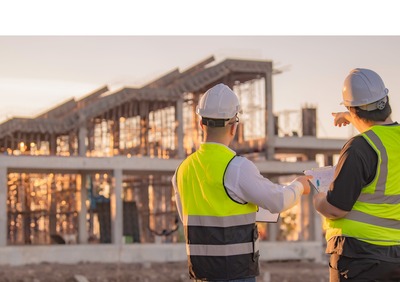
Moglix helped a UAE-based Facility Management company achieve ~6% savings on their materials spend through vendor consolidation.
Moglix helped a UAE-based Facility Management company achieve ~6% savings on their materials قراءة المزيد
Mastering Vendor Relationships: How Intelligent Orchestration Helps CPOs Enhance Collaboration

Mastering Vendor Relationships: How Intelligent Orchestration Helps CPOs Enhance Collaboration
In today’s dynamic procurement landscape, effective vendor relationship management is paramount for Chief Procurement Officers (CPOs) aiming to drive efficiency, innovation, and resilience.
As supply chains become more complex, traditional approaches to vendor management often fall short, leading to communication gaps, compliance issues, and missed opportunities for collaboration.
Enter intelligent orchestration—a transformative approach that leverages advanced technologies to streamline procurement processes, enhance supplier collaboration, and empower CPOs to lead with agility and foresight.
The Strategic Importance of Vendor Relationships
Strong vendor relationships are the bedrock of successful procurement strategies. They enable organizations to:
- Ensure supply chain reliability: Reliable vendors contribute to consistent product availability and service delivery.
- Optimize costs: Collaborative partnerships often lead to better pricing, favorable terms, and shared cost-saving initiatives.
- Drive innovation: Engaged suppliers are more likely to contribute innovative ideas and solutions.
- Enhance quality: Long-term relationships foster a mutual commitment to maintaining high standards.
- Build resilience: Vendors with shared strategic goals help navigate disruptions and market volatility more effectively.
However, managing these relationships effectively requires more than periodic check-ins and contract renewals.
It demands a proactive, integrated approach that aligns vendor capabilities with organizational goals—making vendor management a strategic pillar of procurement leadership.
Challenges in Traditional Vendor Management
Despite their importance, vendor relationships often face several challenges:
- Inefficient communication: Disparate systems and lack of centralized information can lead to misunderstandings and delays.
- Limited visibility: Without real-time data, tracking vendor performance and compliance becomes difficult.
- Resource-intensive processes: Manual tasks consume valuable time and are prone to errors.
- Compliance risks: Inadequate oversight can result in non-compliance with contracts and regulations.
- Lack of scalability: Traditional systems often struggle to scale with growing supplier networks and global operations.
These issues not only strain vendor relationships but also hinder the organization’s ability to respond swiftly to market changes—impacting operational continuity and strategic agility.
Embracing Intelligent Orchestration
Intelligent orchestration refers to the integration of advanced technologies—such as artificial intelligence (AI), machine learning (ML), and automation—into procurement processes to enhance decision-making and collaboration.
Key components include:
- Centralized data management: Consolidating vendor information into a single platform for easy access and analysis.
- Real-time analytics: Monitoring vendor performance and identifying trends to inform strategic decisions.
- Automated workflows: Streamlining routine tasks like order processing and compliance checks to reduce errors and free up resources.
- Collaborative platforms: Facilitating seamless communication between internal teams and vendors to foster transparency and trust.
- Predictive insights: Leveraging AI to forecast supply disruptions, demand changes, and vendor risk proactively.
By adopting intelligent orchestration, CPOs can transition from reactive management to proactive leadership, ensuring that vendor relationships are not just maintained but continuously optimized for long-term value.
Benefits of Intelligent Orchestration in Vendor Management
Implementing intelligent orchestration offers numerous advantages:
- Enhanced collaboration: Real-time communication tools and shared platforms promote transparency and joint problem-solving.
- Improved compliance: Automated monitoring ensures adherence to contractual obligations and regulatory requirements.
- Increased efficiency: Automation reduces manual workload, allowing teams to focus on strategic initiatives.
- Data-driven insights: Advanced analytics provide a deeper understanding of vendor performance and areas for improvement.
- Risk mitigation: Early detection of potential issues enables prompt corrective actions, minimizing disruptions.
- Scalable operations: A unified orchestration framework supports expansion into new markets and supplier ecosystems with minimal friction.
- Faster decision-making: Dashboards and AI insights empower procurement leaders to act quickly and confidently.
These benefits collectively contribute to a more resilient and responsive procurement function, reinforcing the importance of vendor relationships as a strategic asset.
Implementing Intelligent Orchestration: Best Practices for CPOs
To successfully integrate intelligent orchestration into vendor management, CPOs should consider the following steps:
- Assess current processes: Identify existing gaps and inefficiencies in vendor management workflows.
- Define clear objectives: Establish specific goals for what the organization aims to achieve through intelligent orchestration.
- Select the right technology: Choose platforms that offer scalability, user-friendliness, and integration capabilities with existing systems.
- Engage stakeholders: Involve procurement teams, IT, and key vendors in the planning and implementation process to ensure buy-in and smooth adoption.
- Train internal teams: Invest in skill development to ensure teams can leverage orchestration tools effectively.
- Monitor and adjust: Continuously evaluate the impact of intelligent orchestration and make necessary adjustments to optimize outcomes.
By following these vendor management best practices, CPOs can ensure a seamless transition to a more intelligent and collaborative procurement ecosystem.
Conclusion
In an era where agility, transparency, and collaboration are critical, intelligent orchestration emerges as a powerful tool for CPOs to elevate vendor relationships.
By leveraging technology to streamline processes, improve communication, and derive actionable insights, organizations can build stronger partnerships that drive mutual growth and success.
Mail your inquiries to emea@moglixbusiness.com or get in touch with our team here: https://business.moglix.ae/contact-us/
Best Practices for CTOs to Implement Procurement Software Successfully
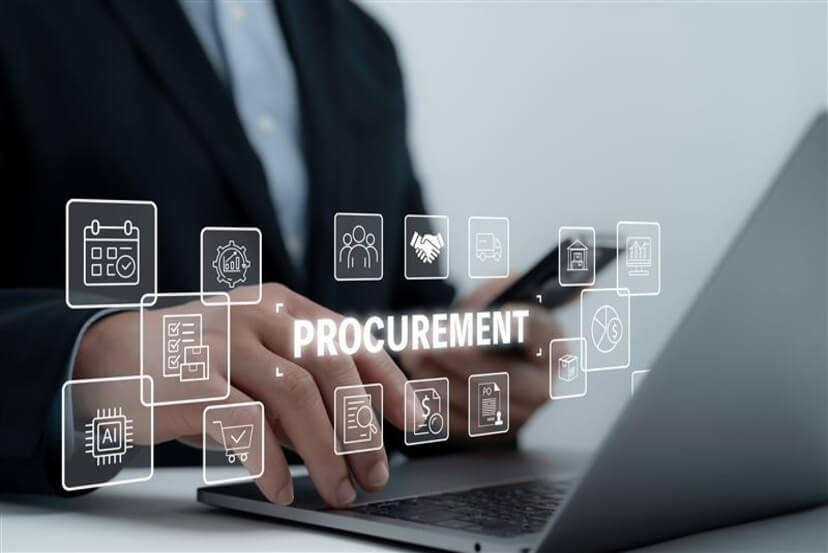
Best Practices for CTOs to Implement Procurement Software Successfully
Procurement software has emerged as a critical enabler of efficiency, transparency, and scalability in enterprise procurement.
As organizations continue to embrace digital transformation, Chief Technology Officers (CTOs) play a pivotal role in ensuring the successful deployment and integration of enterprise procurement software.
Implementing procurement technology isn’t just about plugging in a new tool—it requires thoughtful planning, cross-functional collaboration, and a clear roadmap to drive adoption and maximize ROI.
For CTOs tasked with leading this change, aligning procurement goals with IT strategy is essential.
In this article, we explore the best practices for CTOs to ensure the smooth implementation of digital procurement systems that deliver value and long-term impact.
1. Start with a Clear Business Case and Defined Objectives
Before any technology implementation, CTOs must work closely with procurement and finance teams to define clear goals and KPIs.
Is the aim of reducing maverick spending? Improve supplier visibility? Accelerate approval workflows?
A well-articulated business case provides direction and helps gain stakeholder buy-in across departments. It also sets the foundation for measuring success after implementation.
Key Tip: Quantify potential benefits such as time savings, error reduction, cost savings, or compliance improvement to support internal justification.
2. Choose the Right Procurement Software for Your Enterprise Needs
Not all procurement tools are created equal. CTOs should conduct a comprehensive evaluation of the organization’s needs—current and future—and select procurement software that aligns with both scale and complexity.
Factors to consider include:
- Cloud-based vs on-premises deployment
- Integration capability with existing ERPs, CRMs, and finance systems
- Customizability and scalability
- Supplier management and analytics features
- Compliance and audit trail functions
Key Tip: Prioritize solutions with robust APIs and modular architecture to future-proof your digital procurement stack.
3. Involve Cross-Functional Stakeholders from Day One
Implementing enterprise procurement software isn’t just an IT project—it’s an organization-wide initiative.
Procurement, finance, operations, and compliance teams all have vested interests in how the tool functions.
CTOs should bring stakeholders into the planning process early to:
- Collect detailed requirements
- Identify pain points in current workflows
- Set realistic timelines and milestones
- Ensure user-centric design and training readiness
Key Tip: Form a steering committee with representatives from each department to ensure alignment and accountability.
4. Ensure Seamless Data Migration and System Integration
A major hurdle in digital procurement adoption is the challenge of migrating legacy data and ensuring integration with existing business systems.
Clean, structured, and deduplicated data is essential for the success of the new system.CTOs must coordinate a robust data migration strategy that includes:
- Cleansing vendor master data
- Mapping chart of accounts
- Validating purchase history
- Creating automated data sync between systems
Key Tip: Conduct trial migrations in a sandbox environment to identify and correct errors before full-scale deployment.
5. Prioritize User Experience and Training
Even the most advanced procurement software can fail if end-users resist adoption. CTOs must advocate for a simple, intuitive user interface that minimizes friction.
Equally important is investing in a structured training program tailored to different user roles—buyers, approvers, finance teams, etc.
Consider a blend of live demos, video tutorials, helpdesk support, and user manuals.
Key Tip: Collect feedback during the pilot phase to refine user experience and address concerns early.
6. Leverage Automation and AI for Procurement Efficiency
Modern procurement platforms offer built-in automation and AI capabilities that help organizations eliminate repetitive tasks, gain predictive insights, and improve compliance.
CTOs should work with procurement leaders to implement:
- Automated approval workflows
- Intelligent purchase order generation
- Supplier performance dashboards
- Spend analytics and risk alerts
Key Tip: Start small—automate one or two processes first, then scale based on ROI and ease of adoption.
7. Monitor Performance and Optimize Continuously
Once the software is live, the journey doesn’t end. CTOs must collaborate with procurement teams to track performance metrics and optimize processes continuously.
Important KPIs to monitor include:
- Purchase order cycle time
- Cost per transaction
- Contract compliance rates
- Supplier satisfaction and SLA adherence
- User adoption rates
Key Tip: Set up quarterly reviews to evaluate system performance, user feedback, and emerging needs.
8. Ensure Robust Security and Compliance
As procurement systems handle sensitive vendor, pricing, and payment information, ensuring data security and regulatory compliance is a must.
CTOs should ensure the procurement software adheres to:
- Role-based access controls
- GDPR and regional data laws
- Secure audit trails
- Regular vulnerability assessments
Key Tip: Work closely with your cybersecurity team and software vendor to conduct periodic security audits.
CTOs as Enablers of Procurement Innovation
CTOs are uniquely positioned to bridge the gap between technology and business value.
By adopting a strategic, stakeholder-driven approach to procurement software implementation, CTOs can accelerate digital transformation and enable procurement to become a proactive, insight-driven function.
The benefits of successful procurement software deployment are clear—greater transparency, cost savings, better compliance, and enhanced collaboration across the supply chain.
Ready to transform your procurement operations with cutting-edge technology?
Mail your inquiries to emea@moglixbusiness.com or connect with our team at: https://business.moglix.ae/contact-us/
5 Common MRO Procurement Challenges and How CPOs Can Solve Them
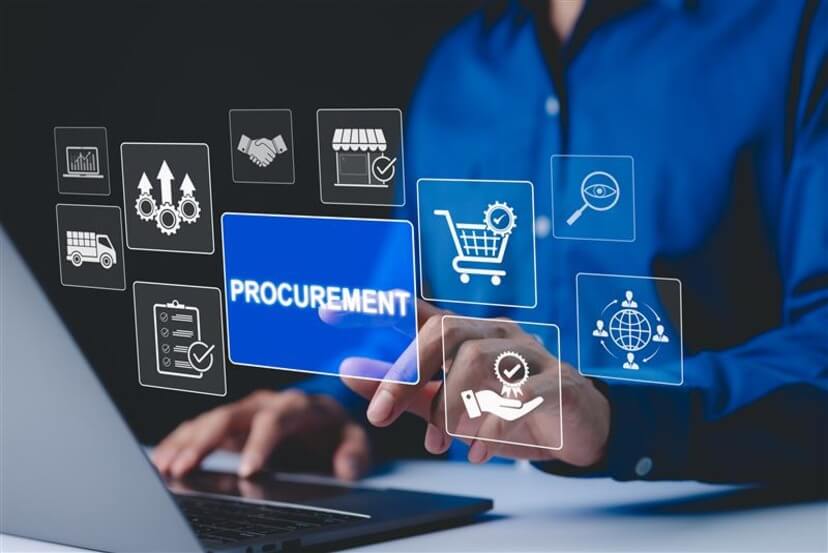
5 Common MRO Procurement Challenges and How CPOs Can Solve Them
MRO procurement—which covers Maintenance, Repair, and Operations supplies—is often one of the most overlooked areas in the procurement landscape.
However, for Chief Procurement Officers (CPO s) managing complex supply chains, the effective handling of MRO can significantly impact operational efficiency, downtime reduction, and overall cost optimisation.
Unlike direct materials, MRO items are often non-strategic, low-cost, and highly fragmented, making them difficult to manage.
From stock-outs of critical components to excess inventory and untracked spending, MRO procurement challenges can quietly erode an organisation’s efficiency and profitability.
In this blog, we uncover five common MRO procurement pain points and explore how forward-thinking CPOs can resolve them through strategic interventions and process innovation.
1. Lack of Visibility and Control Over MRO Spend
The Challenge:
MRO spend is typically scattered across multiple departments, locations, and suppliers, making it difficult for CPOs to track purchases or enforce standardization.
This often leads to maverick spending, poor contract compliance, and misalignment with corporate procurement goals.
The Solution:
To regain control, CPOs should centralize MRO procurement using digital platforms that enable real-time visibility into purchases across all locations.
Implementing a unified catalog and spend analytics tools can help track consumption patterns, identify savings opportunities, and eliminate off-contract purchases.
Key Tip: Align MRO spend data with your enterprise resource planning (ERP) system to streamline oversight and reporting.
2. Excessive Supplier Base and Fragmented Purchasing
The Challenge:
Many organizations rely on hundreds of MRO suppliers to fulfill thousands of low-value items, creating inefficiencies in procurement, invoicing, and vendor management.
This fragmented approach results in higher transactional costs, reduced negotiating power, and inconsistencies in quality and service levels.
The Solution:
CPOs should initiate a supplier rationalization program aimed at optimizing MRO purchasing by consolidating suppliers.
Strategic sourcing of preferred vendors and leveraging volume for better pricing and service agreements are key strategies.
Key Tip: Use a scorecard to evaluate suppliers on quality, delivery, pricing, and responsiveness before consolidation.
3. Poor Inventory Management and Stockouts
The Challenge:
Unreliable inventory management often leads to overstocking of non-essential items while running out of critical spares, causing unplanned equipment downtime and production delays.
In many cases, there’s no accurate picture of what’s in stock, where it’s located, or when it will be used.
The Solution:
Adopt a predictive inventory management system that integrates with plant operations.
CPOs can reduce MRO costs and increase availability by implementing just-in-time (JIT) replenishment strategies, automated reorder points, and barcode scanning.
Key Tip: Conduct regular inventory audits and apply ABC classification to prioritize critical items.
4. Decentralized Procurement and Inconsistent Processes
The Challenge:
When each facility manages MRO procurement independently, organizations face inconsistent purchasing practices, lack of compliance, and missed opportunities for bulk discounts.
These silos can also hinder visibility and delay maintenance activities.
The Solution:
Standardize procurement processes across all sites through centralized governance.
Create a unified procurement policy, mandate e-procurement tools, and define workflows for approvals, requisitions, and vendor engagement.
Key Tip: Empower site-level teams with clear SOPs while maintaining control through centralized monitoring.
5. Limited Focus on MRO Cost Reduction
The Challenge:
Because MRO items represent a small portion of total spend, they often don’t receive strategic attention.
However, inefficiencies in MRO can lead to hidden costs such as downtime, emergency purchases, and maintenance delays.
The Solution:
CPOs must shift from a transactional mindset to a strategic approach in MRO procurement.
Cost reduction opportunities lie in demand aggregation, contract renegotiation, supplier collaboration, and lifecycle cost analysis.
Leveraging data-driven insights and working closely with operations and maintenance teams is crucial.
Key Tip: Set MRO-specific KPIs such as cost per item, fill rate, and service level agreement (SLA) compliance to drive performance.
Strategic Takeaways for CPOs
MRO procurement may not always be in the spotlight, but the hidden inefficiencies in this space can have a disproportionate impact on the organization’s bottom line.
By addressing these five pain points head-on, CPOs can deliver:
- Reduced procurement costs through supplier consolidation
- Improved uptime with better inventory planning
- Enhanced visibility and control via digital procurement systems
- Greater compliance with centralized governance
- Sustainable, long-term value through continuous process improvement
With increasing emphasis on agility, cost efficiency, and supply resilience, optimizing MRO procurement is no longer optional—it’s a strategic imperative.
Want to streamline your MRO procurement operations?
Mail your inquiries to emea@moglixbusiness.com or get in touch with our team here: https://business.moglix.ae/contact-us/
How CPOs Can Drive Successful Vendor Consolidation to Boost Efficiency and Reduce Costs
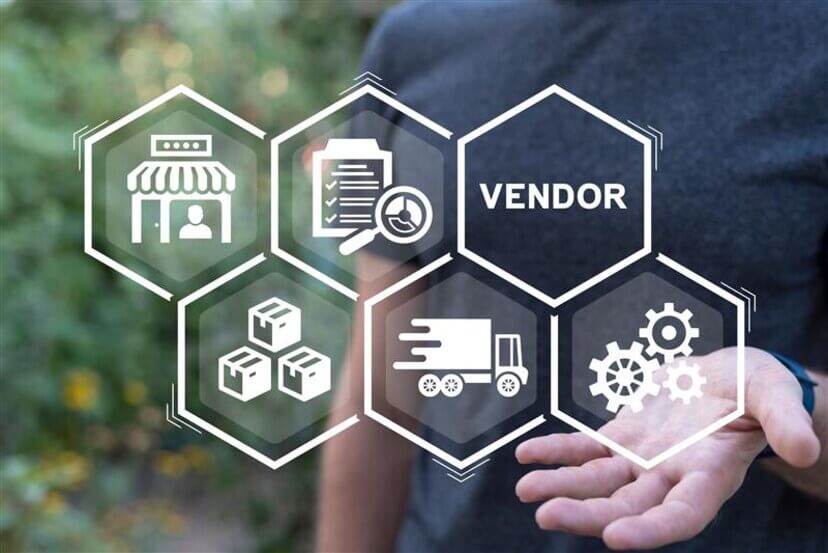
How CPOs Can Drive Successful Vendor Consolidation to Boost Efficiency and Reduce Costs
Vendor consolidation has emerged as a powerful procurement strategy for Chief Procurement Officers (CPOs) seeking to streamline supply chains, enhance vendor relationships, and drive significant cost optimization.
As organizations worldwide navigate inflationary pressures, geopolitical uncertainties, and supply chain disruptions, the role of CPOs has never been more strategic.
In this article, we explore how CPOs can successfully lead vendor consolidation initiatives, the benefits it delivers, the challenges it presents, and practical steps to execute a winning consolidation strategy.
What Is Vendor Consolidation?
Vendor consolidation is the process of reducing the number of suppliers an organization works with by centralizing procurement needs to fewer, more strategic vendors.
This approach not only simplifies procurement operations but also offers stronger negotiation leverage, better vendor collaboration, and improved supply chain efficiency.
Why Vendor Consolidation Should Be a Top Priority for CPOs?
1. Cost Optimization and Control
One of the primary goals of vendor consolidation is to achieve cost optimization.
Working with fewer vendors allows procurement teams to negotiate better pricing through higher volume discounts, reduced transaction costs, and improved contract terms.
2. Stronger Vendor Relationships
By focusing on fewer, high-performing vendors, CPOs can cultivate more strategic partnerships.
This leads to improved service levels, innovation, and collaboration. Long-term vendor relationship also enhances trust, transparency, and alignment with business goals.
3. Simplified Procurement Processes
Consolidating vendors reduces administrative burden, simplifies onboarding, and improves contract management.
Fewer procurement touchpoints also streamline compliance, payment processing, and risk tracking.
4. Enhanced Supply Chain Efficiency
Vendor consolidation promotes consistency in supply quality, delivery timelines, and inventory management. A well-aligned vendor network helps CPOs respond faster to market changes and disruptions.
Key Challenges in Vendor Consolidation
Despite its benefits, vendor consolidation is not without risks. CPOs must navigate several challenges:
- Vendor Over-Reliance: Relying heavily on a few vendors may expose organizations to supply disruptions if one vendor fails.
- Resistance to Change: Internal stakeholders may resist consolidating vendors they have longstanding relationships with.
- Quality and Service Concerns: Ensuring that consolidated vendors can maintain high service levels across expanded scope is critical.
- Risk Management: A narrower supplier base requires robust contingency planning and performance monitoring.
How CPOs Can Lead Successful Vendor Consolidation?
Step 1: Audit Your Existing Vendor Base
Start by mapping all current vendors by category, spend, and performance. Identify overlapping suppliers, underperforming vendors, and those with redundant offerings.
Step 2: Define Consolidation Goals
Are you looking to reduce costs, improve delivery times, enhance innovation, or all of the above? Establish clear objectives and KPIs that align with broader procurement strategy.
Step 3: Engage Stakeholders
Include business unit heads, finance, legal, and operations in the decision-making process. Their buy-in is crucial for smooth implementation and long-term success.
Step 4: Evaluate Vendor Performance and Capabilities
Assess vendor reliability, financial health, compliance, and scalability. Choose vendors who not only meet current needs but can grow with your organization.
Step 5: Negotiate Strategic Contracts
Use your increased purchasing volume as leverage to negotiate better pricing, service levels, and innovation clauses.
Multi-year contracts with performance incentives can further strengthen vendor relationships.
Step 6: Develop a Transition and Risk Mitigation Plan
Ensure a phased transition to avoid supply disruptions. Maintain backup of suppliers for critical components and define contingency measures in case of vendor failure.
Real-World Examples of Vendor Consolidation Success
Example 1: Global Manufacturing Firm
A leading automotive component manufacturer reduced its supplier base by 40% and achieved 18% cost savings within the first year.
By consolidating vendors, the company secured bulk pricing and shortened lead times by 25%.
Example 2: Multinational FMCG Company
Faced with increasing supplier fragmentation across APAC, the CPO led a consolidation project that unified procurement across multiple business units.
The result: improved supply chain visibility, centralized compliance, and a 30% reduction in procurement cycle times.
A Strategic Opportunity for CPOs
Vendor consolidation is no longer just a cost-cutting tactic—it’s a strategic enabler of procurement transformation.
When executed thoughtfully, it helps CPOs achieve operational efficiency, mitigate risks, and foster stronger vendor relationships that drive long-term value.
At a time when agility and efficiency are paramount, now is the moment for CPOs to lead the charge toward smarter, leaner, and more resilient supply chains.
Supplier Relationship Management in Indirect Procurement: A Strategic Approach for CPOs
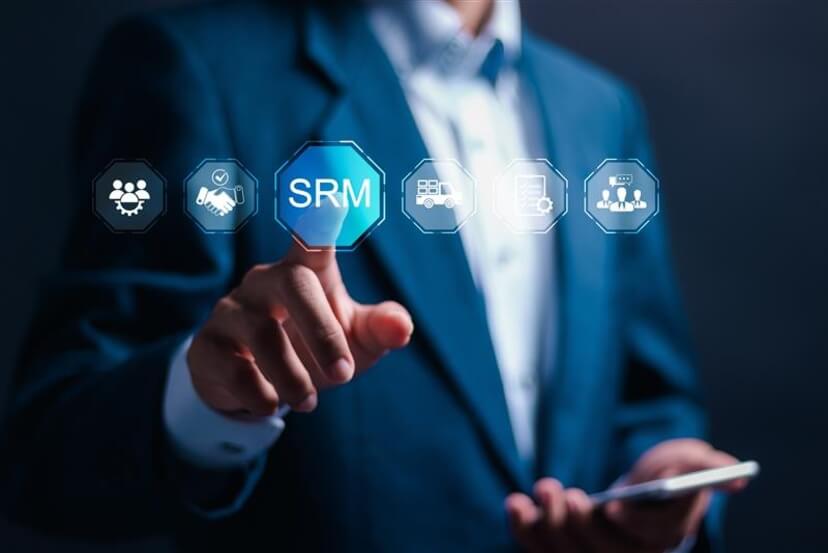
Supplier Relationship Management in Indirect Procurement: A Strategic Approach for CPOs
In today’s fast-paced business world, procurement has evolved beyond simply buying goods and services.
While direct procurement focuses on raw materials and production-related purchases, indirect procurement plays an equally vital role in boosting a company’s efficiency and success.
However, in many organizations CPOs struggle to manage their indirect suppliers effectively, resulting in hidden costs, inefficiencies, and missed opportunities.
This is where supplier relationship management (SRM) becomes essential.
A well-structured SRM strategy enhances operational efficiency, drives cost savings, and builds long-term strategic supplier partnerships.
By focusing on supplier performance evaluation, procurement digitalization, and supplier diversity programs, businesses can build stronger, more resilient supply chains.
Let’s explore why SRM in indirect procurement matters and how companies can make the most of it.
The Importance of Supplier Relationship Management in Indirect Procurement
Indirect procurement covers everything from office supplies and IT services to logistics and consulting.
Unlike direct procurement, indirect procurement suppliers often have diverse and dynamic requirements, making their management more complex.
A strong supplier relationship management strategy offers several advantages:
1. Improved Supplier Performance Evaluation
One key element of SRM is the continuous evaluation of supplier performance.
Businesses should assess suppliers based on key performance indicators (KPIs) like delivery timelines, service quality, cost-effectiveness, and responsiveness.
A systematic evaluation ensures that companies collaborate with high-performing suppliers while identifying and mitigating risks with underperforming ones.
How to implement this:
– Establish clear KPIs and expectations from suppliers.
– Conduct regular performance reviews and feedback sessions.
– Use data-driven insights to optimize supplier relationships.
– Leverage AI and analytics tools to monitor supplier performance in real time.
2. Procurement Digitalization for Efficiency
Technology plays a trans formative role in modern procurement strategies.
Procurement digitalization allows businesses to streamline supplier interactions, automate processes, and boost transparency.
Digital procurement platforms offer real-time analytics, automated invoicing, and improve supplier communication, thereby reducing inefficiencies and manual errors.
Benefits of digitizing procurement:
– Faster procurement cycles with automated workflows.
– Enhanced transparency in supplier performance and contract management.
– Reduced administrative burden, allowing procurement teams to focus on strategic initiatives.
– Greater agility in responding to market changes and supply chain disruptions.
3. Building Strategic Supplier Partnerships
A transactional approach to procurement limits growth opportunities. Instead, organizations must focus on strategic supplier partnerships that foster collaboration and innovation.
Strong supplier relationships lead to mutual trust, better pricing agreements, and improved service levels.
How to foster strategic supplier partnerships:
– Move beyond cost negotiations to value-based relationships.
– Engage suppliers in long-term business planning.
– Encourage open communication and joint problem-solving.
– Align supplier goals with business objectives for mutual success.
4. Implementing Supplier Diversity Programs
Supplier diversity programs promote inclusion by working with minority-owned, women-owned, and small businesses.
These programs not only contribute to social responsibility but also introduce fresh ideas, competitive pricing, and a more resilient supply chain.
Steps to integrate supplier diversity:
– Identify diverse suppliers and assess their capabilities.
– Provide support and training to help them meet business requirements.
– Set diversity goals and track progress over time.
– Partner with local and emerging suppliers to increase sourcing opportunities.
5. Risk Management and Compliance in SRM
Unmanaged supplier risks can result in financial losses and damage to reputation.
Businesses should proactively assess risks, ensure compliance with industry regulations, and establish contingency plans for supply chain disruptions.
Best practices for risk management:
– Regularly audit supplier compliance and financial health.
– Develop contingency plans for critical supplier failures.
– Leverage technology for real-time risk monitoring.
– Ensure suppliers adhere to ethical sourcing and sustainability standards.
6. Cost Optimization Through Effective SRM
A well-managed SRM strategy also leads to cost optimization.
By negotiating better terms, consolidating suppliers, and eliminating inefficiencies, businesses can achieve significant cost savings in indirect procurement.
Ways to optimize costs:
– Identify redundant expenses and eliminate wasteful spending.
– Leverage bulk purchasing agreements to secure discounts.
– Establish long-term supplier contracts with favorable pricing structures.
– Optimize logistics and inventory management for cost efficiency.
Summing Up
Supplier relationship management in indirect procurement is no longer an afterthought; it is a strategic necessity.
By implementing effective supplier performance evaluation, embracing procurement digitalization, nurturing strategic supplier partnerships, and promoting supplier diversity programs, businesses can unlock significant value and resilience in their supply chains.
Companies that invest in SRM not only improve efficiency but also foster innovation and secure long-term growth.
In a rapidly changing business landscape, strong supplier relationships can be the key differentiator between stagnation and success.
Now is the time to prioritize SRM and transform supplier collaboration into a strategic advantage. By taking proactive steps, businesses can enhance operational efficiency, drive down costs, and ensure sustainability in their procurement practices.
Those who embrace SRM today will be the industry leaders of tomorrow.
Digital Procurement: Key Technologies That Are Shaping the Future

Digital Procurement: Key Technologies That Are Shaping the Future
Businesses today are shifting towards digital procurement solutions to make purchasing faster, smarter, and more cost-effective.
Today, businesses are increasingly adopting digital procurement solutions to accelerate purchasing, boost intelligence, and reduce costs.
Companies with rapid technological advances, procurement isn’t merely about cutting costs; it’s about boosting efficiency, strengthening supplier relationships, and driving growth
In this blog, we will explore the key digital procurement solutions that are transforming the way businesses manage their supply chains and procurement operations.
Digital Procurement Solutions: The Future of Smart Purchasing
Digital procurement solutions involve the use of advanced technology to automate and streamline procurement processes.
Traditional methods reliant on manual paperwork and spreadsheets are being replaced by innovative solutions that boost efficiency, transparency, and accuracy.
Some of the key digital procurement solutions include:
- Cloud-based procurement software for seamless procurement management
- E-procurement platforms that digitize purchasing workflows
- Supplier collaboration tools to improve communication and vendor relationships
- Smart procurement analytics to make data-driven purchasing decisions
Integrating these technologies enables businesses to optimize procurement operations and gain greater control over spending.
Procurement Technology Trends Reshaping the Industry
The emergence of new procurement technology trends is redefining how businesses handle purchasing. Some of the most impactful trends include:
1. AI and Automation in Digital Procurement Solutions
Artificial intelligence (AI) and automation play a crucial role in digital procurement solutions.
AI-powered systems analyze large volumes of procurement data to identify cost-saving opportunities, predict demand, and detect potential supply chain disruptions.
Some benefits of AI in procurement include:
- Automated supplier selection based on past performance and pricing
- AI-driven contract analysis to detect risks and compliance issues
- Chatbots for handling procurement inquiries and approvals
- Fraud detection to minimize financial risks
- Real-time alerts for supply chain disruptions
2. Leveraging AI makes procurement smarter and more proactive.
Cloud-Based Procurement Software for Seamless Operations
A major shift in procurement is the adoption of cloud-based procurement software.
This technology enables businesses to centralize procurement processes, making it easier to manage supplier relationships, track orders, and ensure compliance
Key advantages of cloud-based procurement software:
- Real-time access to procurement data from anywhere
- Reduced IT infrastructure costs
- Enhanced security and compliance management
- Easy integration with ERP and financial systems
- Scalability to support business growth
Companies using cloud-based procurement software can collaborate efficiently across departments and locations, ensuring smooth procurement operations.
3. E-Procurement Platforms for End-to-End Digital Transactions
E-procurement platforms are revolutionizing the way businesses purchase goods and services.
These platforms enable companies to digitize and automate procurement workflows, reducing paperwork and manual errors.
Features of e-procurement platforms include:
- Automated purchase requests and approvals
- Integration with supplier catalogs for seamless ordering
- Invoice matching and payment processing
- Spend analysis tools to track and control costs
- Customizable procurement policies to maintain compliance
With e-procurement platforms, businesses can reduce procurement cycle times, improve accuracy, and enhance compliance.
4.Supplier Collaboration Tools: Strengthening Vendor Relationships
Strong supplier relationships are essential for successful procurement.
Supplier collaboration tools help businesses communicate and coordinate effectively with vendors, ensuring timely deliveries and reducing disruptions.
Benefits of supplier collaboration tools:
- Improved transparency in supplier performance and order tracking
- Faster response times for order changes or issues
- Better contract management and compliance tracking
- Real-time communication for seamless collaboration
- Integration with supplier databases for efficient vendor management
Investing in supplier collaboration tools can lead to stronger partnerships and long-term cost savings.
Smart Procurement Analytics: Making Data-Driven Decisions
Smart procurement analytics enables businesses to make informed purchasing decisions based on real-time data.
By analyzing procurement trends and spending patterns, companies can identify cost-saving opportunities and optimize supplier selection.
Advantages of smart procurement analytics:
- Enhanced spend visibility to control costs
- Predictive analytics for demand forecasting
- Data-driven insights for supplier negotiations
- Real-time tracking of procurement KPIs
- Identification of cost reduction opportunities
With smart procurement analytics, businesses can reduce unnecessary expenses and drive procurement efficiency.
5.Blockchain Technology: Enhancing Security in Digital Procurement Solutions
Blockchain technology is emerging as a key player in digital procurement solutions, offering enhanced security, transparency, and efficiency.
By using blockchain, businesses can maintain tamper-proof records of transactions and improve trust in supplier relationships.
Benefits of blockchain in procurement:
- Enhanced transparency: Every transaction is recorded on an immutable ledger.
- Secure contracts: Smart contracts automatically enforce agreements.
- Reduced fraud: Secure authentication minimizes counterfeit risks.
- Faster payments: Automating invoicing reduces payment delays.
As blockchain adoption increases, procurement will become more secure, traceable, and efficient.
6.Internet of Things (IoT): Improving Supply Chain Visibility
IoT technology is playing a vital role in digital procurement solutions by enabling real-time monitoring of supply chain activities.
Connected devices and sensors provide valuable insights into inventory levels, shipment tracking, and equipment performance.
How IoT enhances procurement:
- Real-time inventory tracking: Avoid stockouts and over-purchasing.
- Predictive maintenance: Reduce downtime by monitoring equipment conditions.
- Enhanced logistics management: Track shipments accurately.
- Automated replenishment: IoT-enabled systems place orders when stock is low.
Integrating IoT into procurement strategies helps businesses maintain a smooth and efficient supply chain.
Embrace Digital Procurement Solutions with Moglix
As procurement continues to evolve, businesses must adopt digital procurement solutions to stay competitive.
Whether it’s cloud-based procurement software, e-procurement platforms, or supplier collaboration tools, leveraging the latest technologies can drive efficiency and cost savings.
If you’re seeking a trusted partner to modernize procurement operations, consider cutting-edge digital procurement solutions tailored to your business needs.
With a robust suite of digital procurement solutions, Moglix helps companies optimize spending, improve supplier management, and achieve procurement excellence.
Explore Moglix digital procurement solutions to transform your procurement strategy today!
Enhancing Contract Visibility and Compliance with Contract Lifecycle Management Software

Enhancing Contract Visibility and Compliance with Contract Lifecycle Management Software
In today’s digital procurement landscape, Chief Procurement Officers (CPOs) face increasing challenges in efficiently managing supplier contracts while ensuring compliance and minimizing risks.
Procurement teams handle thousands of agreements that dictate supplier relationships, pricing, regulatory requirements, and risk factors.
Contract Lifecycle Management (CLM) software comes as a savior because they are less time-consuming, have zero chances of human error, and no financial and legal risks.
CLM software automates and centralizes contract processes, empowering procurement professionals to make informed, data-driven decisions.
This blog explores how CLM software enhances contract visibility, strengthens compliance, streamlines procurement governance, and integrates AI-powered contract strategies for future-ready procurement.
Enhancing Contract Visibility with CLM Software
Visibility into contract data is vital for effective procurement operations.
CLM software offers real-time access to contracts, ensuring procurement teams can instantly retrieve key details.
A centralized repository keeps agreements organized, categorized, and searchable.
Benefits of CLM Software for Contract Visibility:
- Instant Access to Contracts and Key Terms – Procurement teams can quickly locate agreements and review key clauses.
- Automated Tracking of Performance and Compliance – Real-time monitoring of supplier obligations, performance metrics, and risk indicators.
- Timely Reminders for Important Deadlines – Automated alerts for renewals, expirations, and compliance milestones help prevent missed deadlines.
- Comprehensive Reporting and Analytics – CLM platforms produce detailed reports to assess supplier performance, optimize negotiations, and mitigate risks.
Eliminating inefficiencies in manual contract tracking allows procurement teams to devote more time to strategic initiatives like cost optimization and supplier relationship management.
Strengthening Compliance and Reducing Risks with CLM Software
Ensuring regulatory compliance and adhering to internal procurement policies is essential for CPOs.
Failure to meet contract obligations can result in financial penalties, reputational damage, and legal disputes.
CLM software helps mitigate risks and maintain compliance through automation and advanced monitoring tools.
How CLM Software Enhances Compliance:
- Standardized Contract Templates – Pre-approved templates prevent inconsistencies and unauthorized changes.
- Streamlined Approval Workflows – Automated workflows ensure proper review and approval, reducing delays and enhancing accountability.
- Automated Compliance Tracking – CLM solutions monitor contracts for regulatory compliance, flagging risks before they become issues.
- Audit Trails for Transparency – Every contract modification, approval, and renewal is recorded, aiding in audits.
By leveraging automated compliance tracking, procurement leaders can proactively address regulatory changes and align supplier agreements with corporate governance standards.
Optimizing Procurement Governance with CLM Software
Strong procurement governance aligns contract management with business goals and industry regulations.
CLM software automates contract workflows, enforces policy adherence, and minimizes unauthorized modifications.
Governance Improvements with CLM Software:
- Clearly Defined Approval Processes – Digital workflows ensure contracts move through the correct approval hierarchy, reducing errors.
- Integration with Procurement and Financial Systems – Seamless integration with ERP and procurement tools streamlines operations and enhances visibility.
- Role-Based Access Control – Sensitive contract information is secured through permission-based access, ensuring only authorized personnel can modify contracts.
By improving governance, procurement teams foster more transparent and collaborative supplier relationships while reducing operational risks.
The Future of Procurement: AI-Powered Contract Strategies
Modern procurement is shifting from cost-saving strategies to value-driven, innovation-focused contract management.
Advanced CLM solutions incorporate artificial intelligence (AI) and automation to enhance visibility, compliance, and risk assessment.
Cutting-Edge CLM Features:
- Predictive Analytics for Supplier Risk Assessment – AI-driven insights identify high-risk suppliers and potential contract vulnerabilities.
- Automated Contract Review and Risk Detection – Machine learning algorithms analyze contract language, flagging problematic clauses.
- Smart Contract Templates – AI-powered templates evolve with regulatory changes, ensuring compliance with minimal manual intervention.
By leveraging AI-driven contract strategies, procurement leaders can shift from reactive contract management to proactive, data-driven decision-making.
Challenges in Contract Management
Managing supplier contracts is complex and high-stakes. Without a robust system, ensuring compliance and meeting contractual obligations becomes difficult. Common challenges include:
- Limited visibility into contracts – Procurement teams struggle to track contract terms, supplier commitments, and key performance indicators due to decentralized storage.
- Increased risk of non-compliance – Missed deadlines, unmonitored clauses, and regulatory non-compliance expose organizations to penalties.
- Inefficient contract approval processes – Traditional management involves lengthy email chains, slow approvals, and bottlenecks that delay procurement cycles.
- Difficulties in document retrieval – Manual or disorganized digital storage makes contract access and version control challenging.
- Susceptibility to errors – Manually managing large volumes of contracts leads to errors in data entry, incorrect renewals, and oversight of critical obligations.
To overcome these obstacles, procurement leaders need digital contract solutions that provide centralized, automated, and intelligent contract management.
Moglix on the Growing Need for Digital Contract Solutions in Procurement
The future of procurement belongs to organizations that embrace digital transformation and automation.
Contract Lifecycle Management software is more than just a tool for improving contract visibility and compliance, it is a strategic enabler for procurement success.
By investing in CLM solutions, procurement leaders can enhance efficiency, reduce manual contract management efforts, and streamline approvals.
Strengthen supplier relationships with transparent, data-driven contract negotiations and drive innovation with AI-powered contract analytics and predictive risk assessment.
If you’re looking for a trusted partner to streamline your procurement processes, Moglix offers cutting-edge solutions tailored to your business needs.
With a vast supplier network, technology-driven procurement platforms, and a proven track record in procurement outsourcing,
Moglix can help you achieve procurement cost savings and operational excellence.
Get in touch with Moglix today to transform your procurement strategy and drive efficiency like never before!

